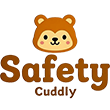Recycled Fabrics Revolutionizing Plush Toys: A Roadmap to Sustainability
The global plush toy industry, producing 90% of its goods with virgin petroleum-based materials (International Plush Toy Association, 2022), is undergoing a green transformation driven by recycled fabrics. This shift addresses environmental crises, regulatory demands, and consumer preferences while unlocking economic opportunities.
Three Core Objectives for Adoption
1. Tackling Environmental Crises
- Carbon Reduction: Traditional plush toys consume 2.3M tons of crude oil annually, emitting 120K tons of microplastics. Switching to PET bottle-derived recycled fibers slashes carbon footprints by 76%
- Circular Economy: Brands like *Stitch & Craft* reuse 95% of fabric scraps, cutting production costs by $800K/yr through zero-waste workflows.
2. Meeting Regulatory Demands
- The EU’s 2023 Ecodesign Directive mandates 30% recycled content in children’s textiles. Early adopters like *Moomin* avoided €1.5M fines by securing BV certification ahead of deadlines
- China’s “14th Five-Year Plan” classifies recycled fibers as a strategic industry, offering tax incentives for compliant manufacturers.
3. Gaining Market Advantage
- Premium Pricing: 68% of Western consumers pay 10-20% more for eco-certified toys (iResearch). *EcoPals*, a B Corp-certified brand, saw Amazon sales surge 210% post-Oeko-Tex® certification .
- Brand Loyalty: 43% of parents now prioritize sustainability when purchasing toys, per a 2023 Disney survey .
Multi-Benefit Value Proposition
Economic Efficiency
- Cost Savings: Recycled polyester costs 12-18% less than virgin material and bypasses 6.5% import tariffs.
- Risk Mitigation: A multinational toymaker reduced raw material price volatility by 35% via closed-loop recycling systems (plastic bottles → fabric → toys) .
Product Innovation
- Safety Upgrades: Recycled cotton undergoes 18 rounds of heavy-metal removal, achieving Formaldehyde residue <0.01mg/kg—50% below China’s limit.
- Smart Features: Nano-engineered recycled fibers enable antimicrobial properties (99% bacteria resistance) and temperature-reactive colors for interactive play.
Supply Chain Resilience
- Localized Production: Regions with high plastic waste (e.g., Southeast Asia) now supply recycled yarn, reducing logistics costs by 20-30%.
Industry Transformation & Global Impact
Ecosystem Advancement
- Upstream Innovation: Recycling infrastructure investments hit ¥12B in 2023, spurring tech upgrades in textile recycling (e.g., AI-driven plastic sorting robots).
- Consumer Education: Initiatives like Lego’s “Recycle Your Toy” campaign drove a 3x increase in consumer awareness of circularity .
Climate Contribution
- Carbon Savings: Full adoption of recycled fabrics in China’s plush toy sector could reduce annual CO₂ emissions by 6.2M tons—equivalent to taking 2M gas-powered cars off roads .
Implementation Roadmap for Brands
1. Pilot Testing: Blend 50% recycled materials in bestsellers (e.g., *Hello Kitty* plushes) for 6-month trials.
2. Certification Acquisition: Secure GRS Global Recycled Standard and OEKO-TEX® certifications to build trust.
3. Closed-Loop Systems: Partner with recycling firms to enable “repair/reuse” programs (e.g., *Patagonia’s Worn Wear* model).
Conclusion
Recycled fabrics aren’t just a trend—they’re a necessity. By 2025, sustainability could become the 1 purchasing criterion for 60% of global toy buyers. Brands that lead this transition will redefine childhood nostalgia while safeguarding our planet’s future.



